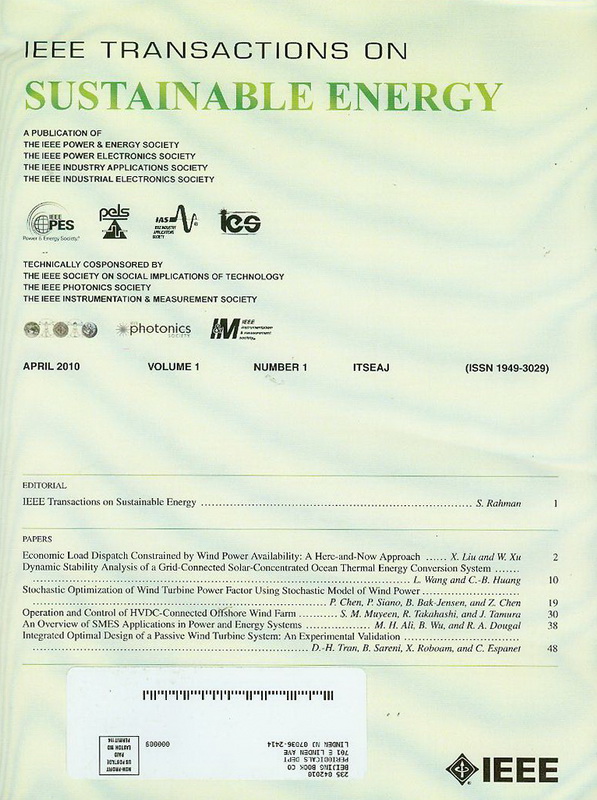风电场齿轮箱减载的最优功率控制
IF 10
1区 工程技术
Q1 ENERGY & FUELS
引用次数: 0
摘要
时变工况下功率和转矩的快速波动增加了风力发电机齿轮箱的疲劳载荷和故障率。本研究针对风电场提出了一种优化的功率控制方法,以改善功率流和服务质量,使风电场能够跟踪来自传动系统操作员的电力需求指令,同时使齿轮箱内振动位移的波动最小化。通过对齿轮箱中行星齿轮、行星齿轮、太阳齿轮和正齿轮等关键部件的传动机理分析,建立了齿轮箱的综合动力学模型,描述了齿轮箱内部振动与机械转矩和输出功率的关系。然后,提出了基于模型预测控制的最优功率控制问题,在跟踪功率的同时抑制疲劳负荷。在此基础上,建立了基于齿轮箱内部实时振动状态的疲劳评价系统,以表征齿轮箱的使用质量,指导齿轮箱的发电。该方法在WFs的最优功率调度问题中提供了一个针对WT疲劳负荷的安全边界,以抑制潜在的WT故障。在MATLAB/Simulink中的实例研究证明了该方法的有效性。本文章由计算机程序翻译,如有差异,请以英文原文为准。
Optimal Power Control in Wind Farms for Gearbox Load Reduction
Rapid power and torque fluctuations in time-varying conditions increase the fatigue load and failure rate of wind turbine (WT) gearboxes. In this study, an optimal power control method is proposed for a wind farm (WF) to improve the power flow and service quality, allowing the WF to track the power demand instructions from the transmission system operator while minimizing the fluctuations of vibration displacements inside the gearbox. A comprehensive dynamic model of the gearbox is developed by analyzing the transmission mechanism of key gearbox components, such as the planet carrier, planet gears, sun gears, and spur gears, describing the correlation between the internal vibration and mechanical torque and power output. Then, an optimal power control problem is formulated based on model predictive control to suppress the fatigue load while tracking power. Furthermore, a fatigue evaluation system is built based on the real-time vibration state inside the gearbox to characterize the service quality of WTs and guide the power generation of the WF. This approach provides a safety-oriented boundary regarding the WT fatigue load in the optimal power dispatch issue of WFs to suppress potential WT failures. Case studies in MATLAB/Simulink demonstrated the effectiveness of the proposed method.
求助全文
通过发布文献求助,成功后即可免费获取论文全文。
去求助
来源期刊

IEEE Transactions on Sustainable Energy
ENERGY & FUELS-ENGINEERING, ELECTRICAL & ELECTRONIC
CiteScore
21.40
自引率
5.70%
发文量
215
审稿时长
5 months
期刊介绍:
The IEEE Transactions on Sustainable Energy serves as a pivotal platform for sharing groundbreaking research findings on sustainable energy systems, with a focus on their seamless integration into power transmission and/or distribution grids. The journal showcases original research spanning the design, implementation, grid-integration, and control of sustainable energy technologies and systems. Additionally, the Transactions warmly welcomes manuscripts addressing the design, implementation, and evaluation of power systems influenced by sustainable energy systems and devices.
 求助内容:
求助内容: 应助结果提醒方式:
应助结果提醒方式:


